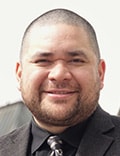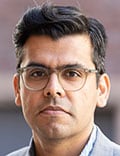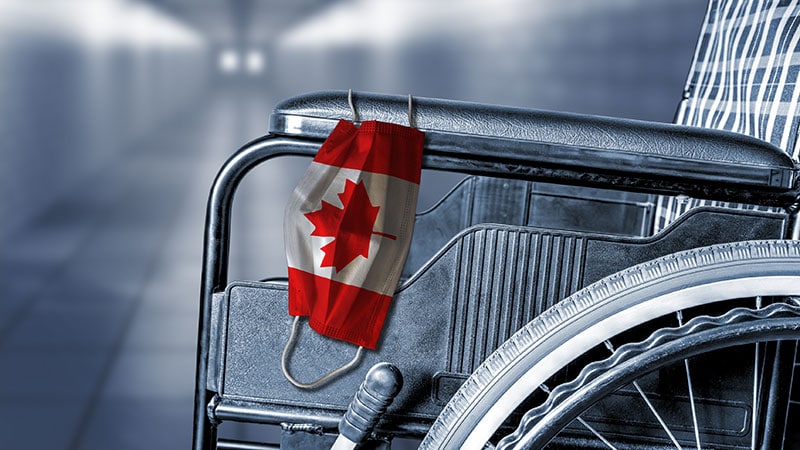[ad_1]
The Canadian Medical Association (CMA) was “disappointed” that no solutions to the ongoing crises across health systems emerged on November 8 at the first in-person meeting of Canada’s health ministers in 4 years.

Dr Alika Lafontaine
The talks fell apart largely over money issues, leaving health ministers “without an agreement between the federal and provincial/territorial governments regarding funding and without…a commitment to collaborate on solutions to address critical issues plaguing our health systems,” Alika Lafontaine, MD, president of the CMA Board of Directors said in a statement.
“The reality of Canadian healthcare right now is it’s deteriorating,” Lafontaine told Medscape Medical News. “As in many parts of the world, it’s been weathered. We’ve gone through these cycles of crisis over and over again. As a result, the most resilient part of our systems, which are the people, can no longer deal with the crises in the same ways.”
During the first COVID wave, Lafontaine, an anesthesiologist, was looking for opportunities to help, where he could fill in on airway teams. “But by the fifth wave, you were just so exhausted from everything that was going on that you still had this strong desire to help, but it just felt heavier,” he said. “I think that’s what’s happening in Canadian healthcare right now. Unless we work through funding discussions toward common priorities and actionable solutions, burned-out healthcare workers, delayed health services, and overwhelmed emergency departments will continue to be a reality.”
Canadian healthcare is divided into federal and 13 separate provincial and territorial systems. An analogy in the US would be the Department of Veterans Affairs or Medicare, where the federal government plays a role, but states also have their own approaches.
Provinces receive a percentage of tax monies from the federal government via the Canada Health Transfer, Lafontaine explained. “Historically, strange as it may seem, the government has not required provinces to spend the money it receives on healthcare. Part of the problem in the recent talks was that the provinces are asking for more money from the government, while the government wants to know how the money will be spent.”
Endless Cycles
“We expressed disappointment because we had a moment to rise to the crisis and make the choice to be collaborative in a way that we’ve never been before,” Lafontaine said. CMA had worked with the Canadian Nurses Association and HealthCareCAN to produce a ‘prescription of hope’ from providers to Canadian governments. “There haven’t been many times in Canadian healthcare that you get patients, doctors, nurses, and other allied providers all on the same page — that things have to change.”
That the talks fell through because of disagreements about how much money the provinces were receiving and the federal government’s focus on how the money is spent “is classically the way things have been — it’s a cycle of returning to the same way we’ve always done things,” Lafontaine said, “and people are breaking under these cyclical crises.”
In an opinion piece in the Vancouver Sun published following the meeting, journalist Vaughan Palmer bluntly stated, “Patients and their families might have chosen something stronger than ‘disappointing’ to describe the outcome of this week’s meeting. Lengthy waiting lists for cancer diagnosis, radiation treatment, and surgery. Overcrowded emergency wards. Millions of Canadians without a family doctor. Shortages of nurses, therapists, and pretty much every other category of healthcare worker. Flu season upon us when COVID-19 has never left. The scramble for pediatric medicines.”
“Given those several crises in healthcare,” Palmer writes, “the proverbial barnyard epithet would have been a more apt choice of words to characterize the latest failure by the country’s health ministers.”
In keeping with this theme, CMA’s recent National Physician Health Survey of more than 4100 physicians documents multiple “challenges to physician health and wellness”:
-
60% of respondents indicated that their mental health is worse now than before the pandemic
-
48% screened positive for depression, up significantly since the CMA’s 2017 survey (33%).
-
57% reported increased workload and lack of work-life integration since the onset of the pandemic as contributing to worsening mental health
-
25% of physicians and residents experience severe (10%) or moderate (15%) anxiety
-
79% of physicians and medical learners scored low on professional fulfillment; fewer than 60% said they were satisfied with their career in medicine
“Immense Pressure”
“Our leaders have been celebrating healthcare workers as heroes,” Danyaal Raza, MD, a family physician with Unity Health Toronto’s St. Michael’s Hospital and an assistant professor and social accountability faculty lead at the University of Toronto’s Department of Family & Community Medicine, told Medscape Medical News. “At a time when our healthcare system is buckling under immense pressure, those words can feel hollow when an opportunity like this so profoundly fails.”

Dr Danyaal Raza
“Like healthcare systems around the world, we are struggling to recover from the backlogs in care that were created during the early waves of the pandemic, when hospitals very appropriately took an ‘all-hands-on-deck’ approach to emergency and ICU care,” he said. “Adding to this challenge is the burnout felt by folks working across the system, the resulting staff shortages, and an early and surging season of RSV, flu, and COVID-19 putting profound pressure on clinics and hospitals. It’s impossible to work in healthcare and not experience these challenges.”
The healthcare worker “supply crunch” is particularly dire now, in the face of patient needs and no significant expansion in resources to close the gap, he noted. The latest CMA data show that Canada has 2.7 physicians per 1000 population (including residents) compared to the Organisation for Economic Co-operation and Development average of 3.5 (2017 or the nearest year). This has led to a physician-to-population ratio that ranks 29th out of 36 nations, ahead only of the US, Chile, Japan, Mexico, Poland, Korea, and Turkey.
“As a family doctor, my patients are feeling those effects through delayed access to higher-level diagnostic imaging and to consultants,” Raza said. “There is a tightening of screws everywhere.”
Calls to Action
Looking ahead, Lafontaine said CMA, in collaboration with other healthcare organizations, will continue to push three calls to action: improving working environments, moving toward team-based and virtual care, and pan-national or pan-regional licensure to enable physicians to provide care anywhere in the country. “Providers and patients are unified that things have to change. Now, governments must get aligned so we can start taking collaborative approaches. The rest of us are already there.”
Raza added a message to the ministers: “You have celebrated healthcare workers as heroes, but we are not super-human. We cannot work shorthanded indefinitely, without the right tools or infrastructure to take care of the communities we serve. It’s time to match rhetoric with reality.”
Follow Marilynn Larkin on Twitter: @MarilynnL.
For more news, follow Medscape on Facebook, Twitter, Instagram, YouTube, and LinkedIn
[ad_2]
Source link








